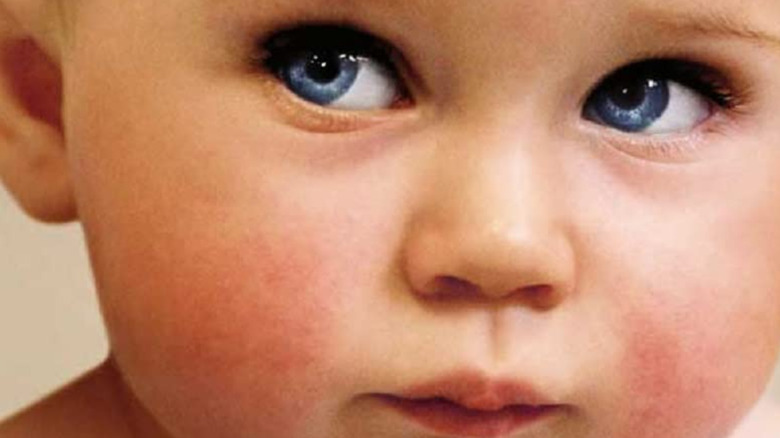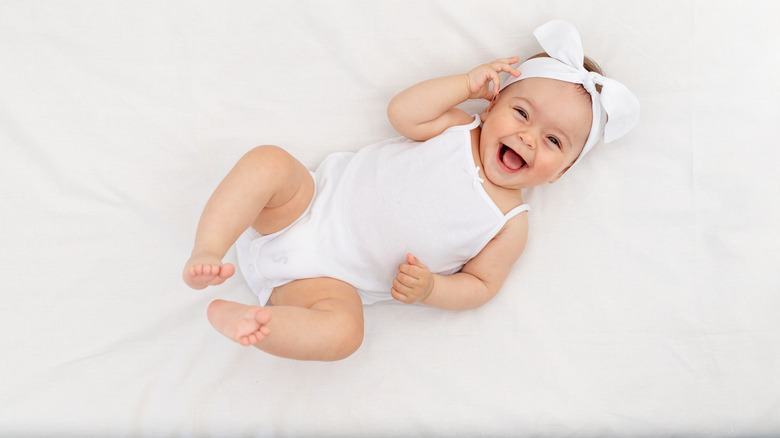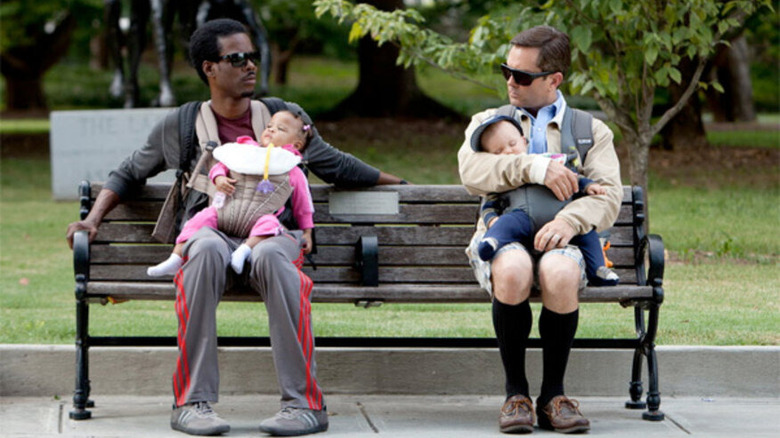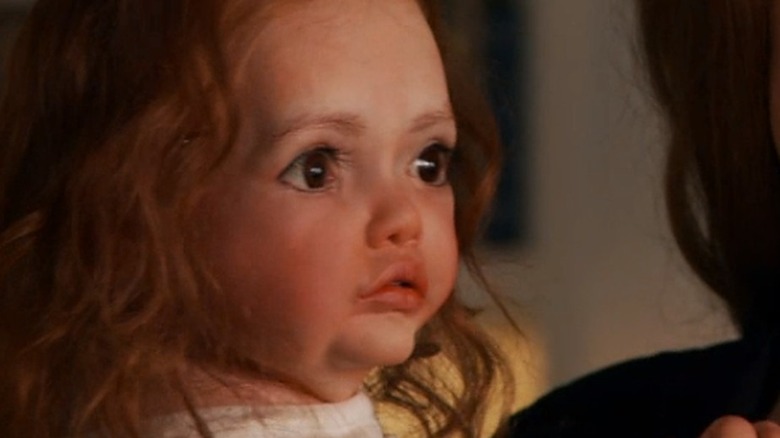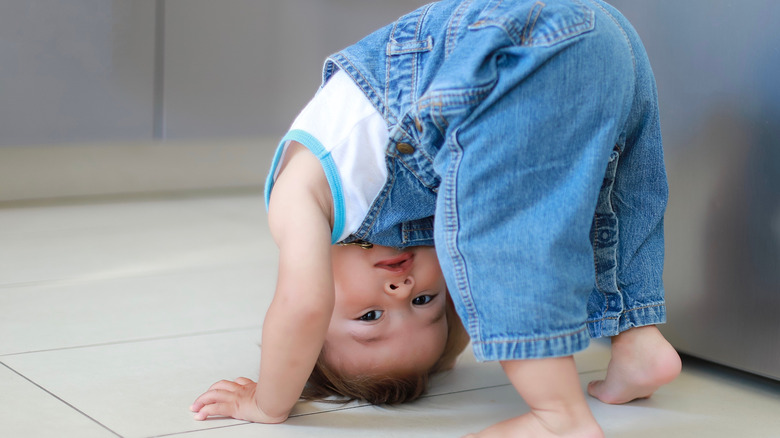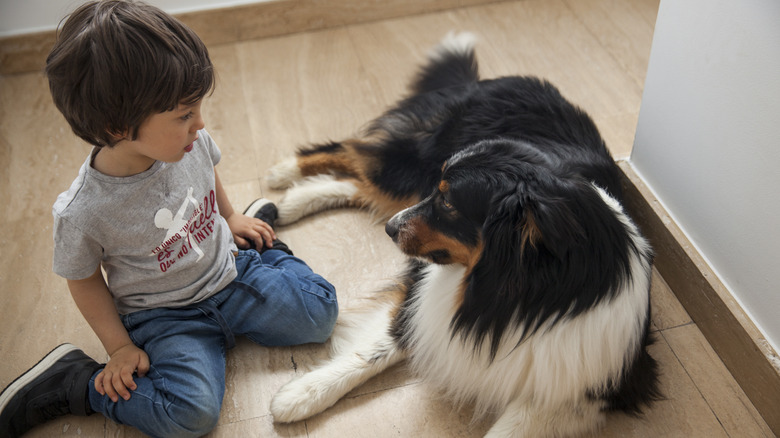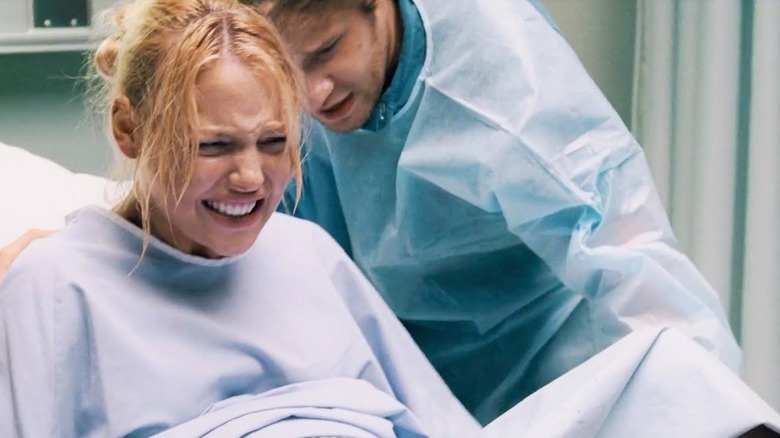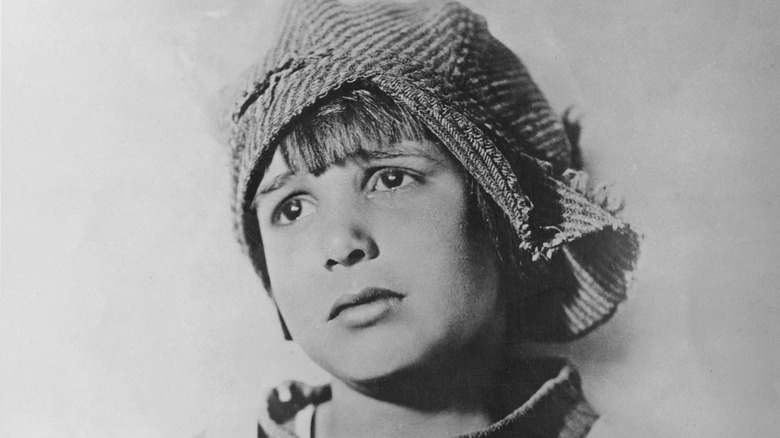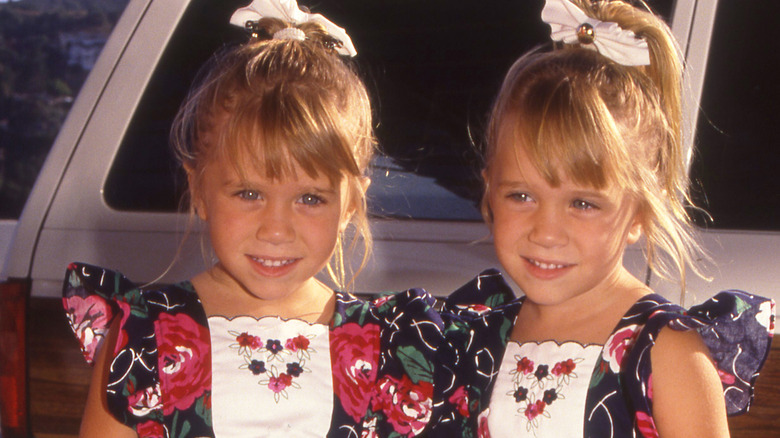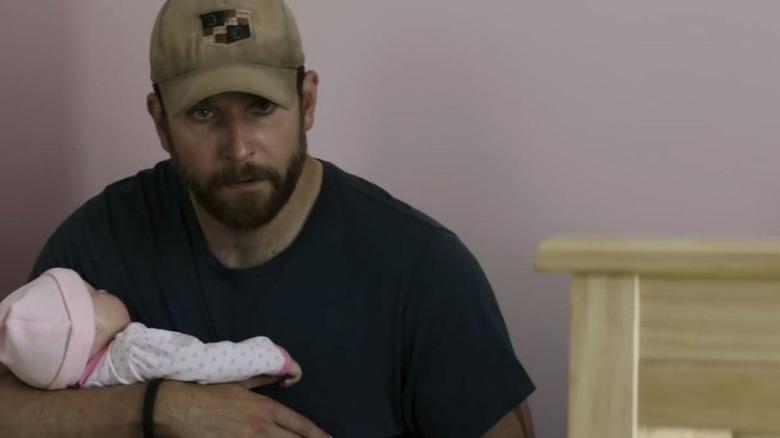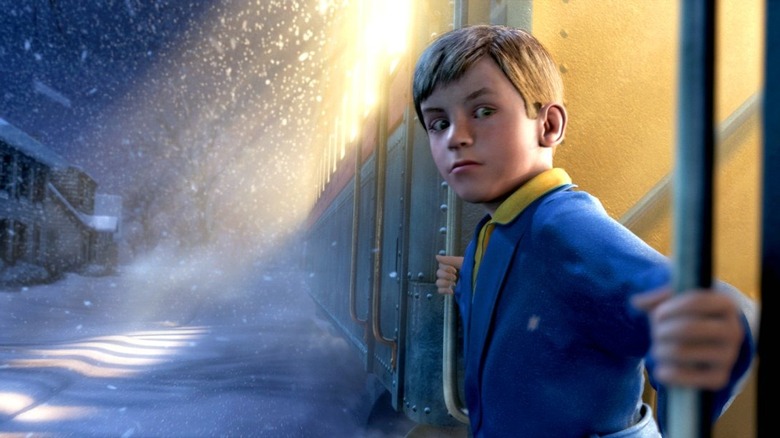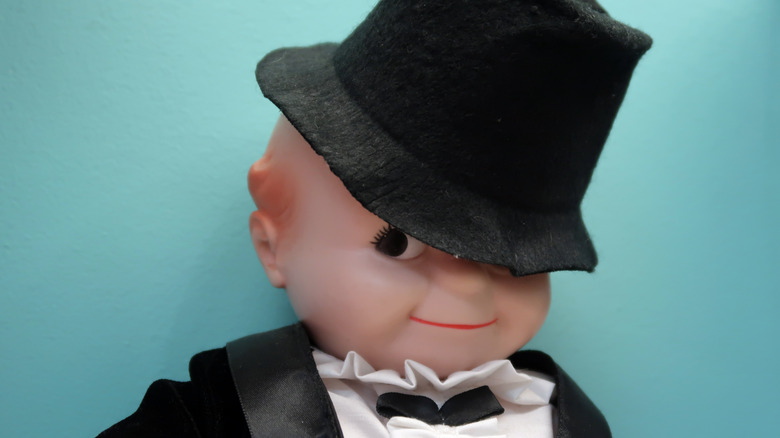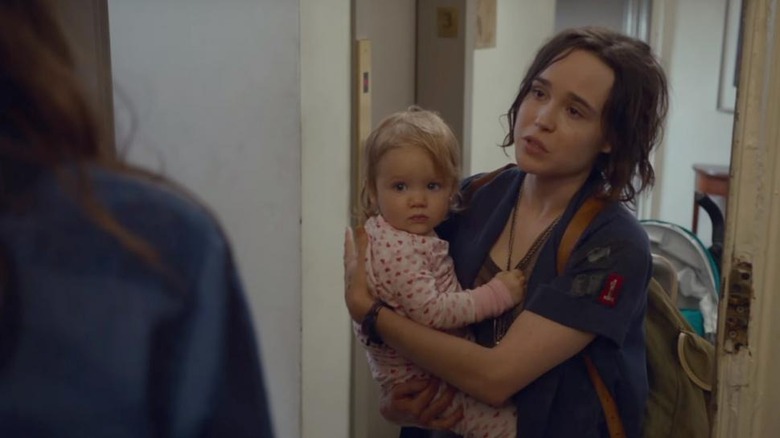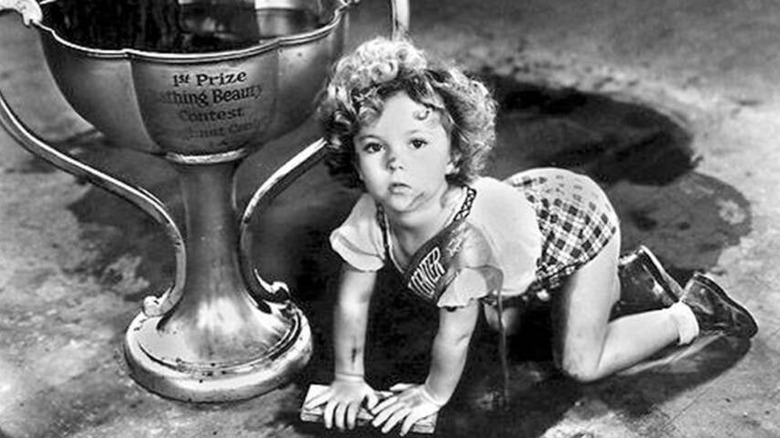The Truth About Movie Babies
Show business is the only industry in America where babies can legally work. It is also, however, an industry with a reputation of being corrupt and exploitative.
So, what does it actually mean for a baby to "work" in Hollywood? How do they get paid — or pay taxes? Do they work the same long hours as their older counterparts, or are they offered certain protections? And what about the reverse: If babies on set get nap time, does that mean the Brad Pitts and Meryl Streeps do, too?
The world of baby show business is a fascinating one. It's complicated and delicate, and there are lots of rules and norms that you might not consider right away.
Babies are a big part of telling realistic stories, because they are a core part of life. But that also means that we have to take good care of them. Sometimes this means setting strict rules on set (in certain states, anyway), and other times it means not using a real baby at all. As the entertainment industry continually works to strike that balance, the involvement of infants evolves in ever-more-intriguing ways, many of which we'll detail below.
Have you heard about the baby wrangler?
Yes, "baby wrangler" is a real job title. But while the name might sound a bit alarming, it's actually a very touching vocation. Think of baby wranglers as "interpreters" for babies. They help the babies do what the directors want on set, which involves a lot of delicate, indirect communication to "actors" who cannot speak yet.
Baby wranglers do the hard work of getting the "spontaneous reaction" from the child that will tug at the heartstrings of parents and others watching. For any parent who has tried to control what their infant does and when, this might sound almost preposterous, but keep in mind, these are professionals who do this all the time.
Rather than trying to get a baby to stop crying — something parents can be seen usually trying to do — sometimes what a baby wrangler needs to do is get a baby to start crying. One professional baby whisperer says that the best way to get a baby to cry on command (also not as horrible a job as it sounds) ... is to start crying yourself. The empathy reaction is both strangely beautiful and not as traumatizing as something like scaring the baby or hiding its mother or something along those lines.
There are usually quite a few "babies on board"
While a lot of time can be spent looking for the "perfect baby" for a role, there is a lot of leeway in certain areas. Sometimes, for example, a baby assigned male at birth plays a female baby character, or vice versa. Productions do try to keep the casting as accurate as possible, but usually no one can tell the difference. The executive producer of 2007's "Knocked Up," Evan Goldberg, for example, can't even remember if they used a boy or a girl for the movie's birth scene.
And "What To Expect When You're Expecting" switched the genders up a couple of times without anyone but the cast and crew knowing, which makes us think twice about the "oops, I brought the wrong baby home" sitcom tropes we may have previously dismissed as unrealistic. For the most part, though, the production of the 2012 film had enough of a deep bench to fill the roles at hand, since there were no fewer than 12 sets of twins and 45 individual babies on the "payroll." Yep, that's 69 total babies, likely resulting in a diaper budget bigger than Michael Bay's explosives allowance.
That's a lot of babies to have running around, even if they can't literally run — but as you'll see, there are limits to when and how long they can be on set that make things easier on both the babies and those who work with and care for them.
CGI = Computer Generated Infant?
Sometimes, films choose to forego a real baby. There are a couple of options in this case, from computer-generated images (aka CGI) to animatronic or prosthetic babies. Such options are often better in fantasy or sci-fi films, where we've already suspended our disbelief just a bit, and where there may already be other CGI elements involved so that the computer-generated infant doesn't look so out of place.
While there are a lot of expenses and obstacles that can be spared by using a CGI baby, this innovation presents its own set of challenges. Sometimes the CGI effects that movies use for their babies come out looking absolutely ridiculous, like the infamous CGI Renesmee Cullen in the 2012 fantasy romance film that concluded the "Twilight" saga, "Breaking Dawn: Part 2."
The "Twilight" films had even primed the pump somewhat, creating space in our heads to accept an odd-looking baby that might result as the mythical spawn of a human and vampire, complete with supernatural abilities and an accelerated growth rate. But in their effort to create a baby who was at the same time physically a newborn but also advanced in maturity, "Twilight" created a monster. Fortunately, the character grew fast enough to be played fully by a real actress in just a few days.
But apparently, the mechanical doll they were originally going to use was even creepier.
Sometimes a special-effects baby would be much easier
Despite all the opportunities to fail at special-effects babies, there's a reason that productions often take the risk and go with a fake baby instead. Movie stars are notoriously petulant and often difficult, and so are babies. Obstacles like the language barrier, stage parents, and the obligations of childcare only kick the stresses of working with a real infant on set up a notch.
Believe it or not, that's even the case when all you really need the baby to do is act like a normal baby.
When it comes down to "special stunts," there are many things that are difficult to get a real baby to do. Infants begin smiling at different ages and for different reasons, for example, so you'd want to make sure you hire a good grinner. But smiling is just the beginning of a baby's "stunt work."
One wrangler had to go through 100 different babies for an audition to try and find one who could bend over and look backwards between its legs. Imagine trying all day to get 100 babies to perform acrobatics you don't even know if they're capable of — and fyi, the baby wrangler reportedly ended up at the chiropractor after that day.
Babies to spare
If 100 seems like a lot of babies to audition or 69 seems like a lot to have hanging around on set for a handful of shots, think about the fact that securing one baby per shot plus two "spares" is pretty much the bare minimum in the industry, and there are often way more.
All kinds of issues can pop up that you might not even imagine, so this baseline number isn't as ridiculous as it might sound. Unless you're a parent, of course, in which case you probably know everything that can go wrong.
Surprisingly, a fair amount of baby wranglers actually don't want children of their own, despite how much they love working with them. Maybe they decide that taking care of kids can be a lot easier when you only have to do it a certain number of hours per week (and get paid for it).
Babies can get rashes seemingly without notice, as their skin is more delicate and their allergies and sensitivities may not have all been revealed yet. They may also present with unexpected animal allergies and not be able to act opposite the indispensable "family dog." If any of these roadblocks, temper tantrums, or general crankiness throws a wrench in the works, it's time to do the one thing no real parent can do — and call in the backup baby.
Health matters
Not only do sets require more babies than you might expect, but they also need a nurse for every three babies on set, so "hiring" babies also means providing them "health benefits," in a way. It definitely means that when you hire one baby, you're really hiring multiple people, at the bare minimum a baby wrangler and nurse in addition to the infant itself.
The concern for the baby's health care also means that for live birth scenes, infants can't be smeared with food products that commonly cause allergic reactions. Cream cheese and jelly, though, among other things, are still "on the table." But only certain flavors of jelly! Since varieties like strawberry and raspberry are more commonly discovered as allergens, grape jelly or cherry jelly is the go-to instead.
Some people pride themselves on making "goo" mixtures that are everything from edible to gluten free. But even if the babies involved are real, the bodies of the women giving birth, like the "goo," are usually artificial.
Parental involvement and payment
Movie sets are required to do a lot to ensure the safety of infants on set when it comes to hiring personnel. But while every three babies needs a nurse, every single baby still needs to have its parent, parents, or guardian on set throughout the entire duration of filming.
Babies get a $126 per day payment (yes, it's taxable) when they're billed as background actors, but some earn a principal performer credit, for which SAG allows $737 per day.
In 1921, Charlie Chaplin starred in the hit film "The Kid" alongside an adorable seven year old boy he had discovered by the name of "Jackie" Coogan. The film made Coogan one of the first child stars, as America fell in love with him. he would star in more than 18 films in the next decade — but when Coogan was 23 and roles began drying up, he went to collect the nearly $4 million he had earned and learned that his mother and stepfather had spent it all.
The resulting legal battle brought about the "Coogan Law," requiring that a child's employer set aside 15 percent of all earnings in a "Coogan account" to be accessed by the child when they turn 18 years old. It was the greatest legacy of Coogan, whose career eventually picked back up to the point where he's fondly remembered today not only as a protector of child actors, but as the original Uncle Fester on "The Addams Family."
Out of sight, out of a job
Just because nurses and parents have to constantly be on set doesn't mean that a baby wrangler gets to relax: one of their rules is that they can't ever let the child in question out of their sight. It's like being a super-glorified babysitter. This is probably a lot easier when the baby isn't old enough to walk yet, but it's important to never underestimate a little one's ability to cause mischief, for the safety of both the baby wrangler's charge and their job.
However, there is one exception to the "never let them out of your sight" rule. Casting directors are allowed to be alone with the children, not only without a baby wrangler or nurse, but even without the parents present. In some cases, they are afforded this access with no background check requirement.
All the baby-wrangling hassle is only for a couple hours a day
Just two hours each day is how long babies are allowed to be physically on set, period, and they can only do 20 minutes of filming per day in California, where the laws regarding working with infants are the strictest. So not only do babies require the production to have all kinds of natal-specific personnel at the ready, but they require that everyone, not just those directly involved with the baby, be on the ball.
A mere 20 minutes on a film set can basically be the blink of an eye when you're trying to get the perfect take: A single page of a script can regularly take two hours to shoot! This means that the remaining cast and crew must be at the top of their game when a baby is on set, which in California must be between 9:30 and 11:30 AM or 2:30 and 4:30 PM.
This is why it's really exciting to find a set of twins, because it allows the production to get 40 minutes of filming per day for the same character, 20 minutes for each baby. Multiples are also typically born premature, which means that in addition to extra filming time, the baby will look more "newborn."
In Louisiana, though, the rules are more lax: babies can work for six hours a day, six days a week — almost a full time job.
Be a doll, won't you?
One infamously terrible movie baby wasn't computer generated but instead appeared in 2014's "American Sniper" working opposite actors like Bradley Cooper who were clearly holding a fake infant and somehow managing to keep straight faces. The child in question looked like a plastic baby doll, because that's what it was.
Somehow, that movie got a Best Picture nomination. The stiffness and unrealistic movements of the babies in the film made it pretty unsettling, especially when you heard an inserted baby's cry dubbed in. Reviewers, and even Cooper himself, were left scratching their heads.
The production had actually hired multiple babies for that scene. But one of them got a fever, another didn't show up on the day of shooting ... and to paraphrase the old saying, sometimes you have to fake it until you make it.
The surreal thing
Dolls and animatronic babies are often starkly distinguishable from the real thing, tapping into an unnerving phenomenon known as the "uncanny valley."
No, it isn't a place, but a literal "valley" in the graph between a subject's resemblance to a human, and a human viewer's emotional response to the subject.
If something doesn't really resemble a human, we can still find it cute and have an empathetic response (think Baby Yoda). If something looks exactly like a human (a photo-real baby, for instance), it can also elicit an empathetic response. But if something falls in-between, our minds tell us that something is "off," and that's where things get a little weird — it's why we're creeped out by human-like dolls, or "The Polar Express."
Sometimes, even when an artificial baby is intended to be creepy, the fake baby-vibe doesn't land the way it's supposed to — take the animatronic baby on the ceiling in "Trainspotting," for example. Or the CGI-ified baby in 2004's "Dawn of the Dead," which had so many layers of special effects on it that audiences couldn't recognize or take it seriously as a zombie baby born to a zombie woman.
At least a doll can't get fired
For living and breathing movie babies, the gig is much, much more intense than for any kind of artificial baby. They aren't the "boss." If the children don't perform (too tired, too cranky, won't crawl in the right direction) they can be fired and replaced just like that. And they don't get a lot of union protection. In fact, minors in the entertainment industry are often exempt from child labor laws that govern most industries.
There are a lot of things that call into question how safe the industry is for babies. They cannot communicate or advocate for their own interests, so it would be easy for a director or producer to put their needs and desires before the needs of the child. It seems like this kind of prioritization has long been accepted. Imagine running an ad (or responding to it by offering up your child) like the one that read, "Babies that were premature are ideal" ... That just sounds a little alarming and exploitative of an already-vulnerable population.
While California has some of the strictest protections, 18 states have no regulations at all, and there are no federal-level laws protecting underaged workers and infants on the set of a film.
The golden age
California requires that a baby working in entertainment be at least two weeks and one day old, so while 15-day-old babies who were carried to term may have lost that "newborn look" by the time they are eligible for employment, babies born prematurely often still look "newborn-sized" by the eligible age — which is why California eventually outlawed the use of preemies in film and TV.
As for the rest of the babies who were born on time? A doctor has to sign off that the baby was carried to term, is in reasonable health, and is at least 15 days old.
Interestingly enough, the 15-day-old age requirement to cast a baby in the movie becomes the de facto minimum age requirement to be a member of the Screen Actors Guild. This is also why films can't use live births: an unborn baby can't yet be a SAG member, so they can't be cast before they're born, and therefore can't appear in a film.
Baby and child actors have come a long way
A lot has changed since the early days of Hollywood, even if there is still work to be done standardizing the protection of children in the industry across the country.
Shirley Temple was discovered during a series of "Baby Burlesks," shows in which babies acted out suggestive bar and dance scenes, and in those days getting child actors to perform was less about coaxing and more about punishment.
In fact, when they misbehaved, there are some terrifying old Hollywood tales of kids being locked in a windowless room with nothing to sit on but a block of ice.
In modern Hollywood, to get shots of drowsy babies, they just coordinate it with the baby's normal nap time. Considering how many babies and kids of all ages have appeared in front of cameras since the days of Jackie Coogan, Hollywood sure has come a long way. As long as there are stories to be told, there will always be a need for babies — here's hoping those who are charged with their wellbeing on set take good care of the little people who make such stories worth telling.
